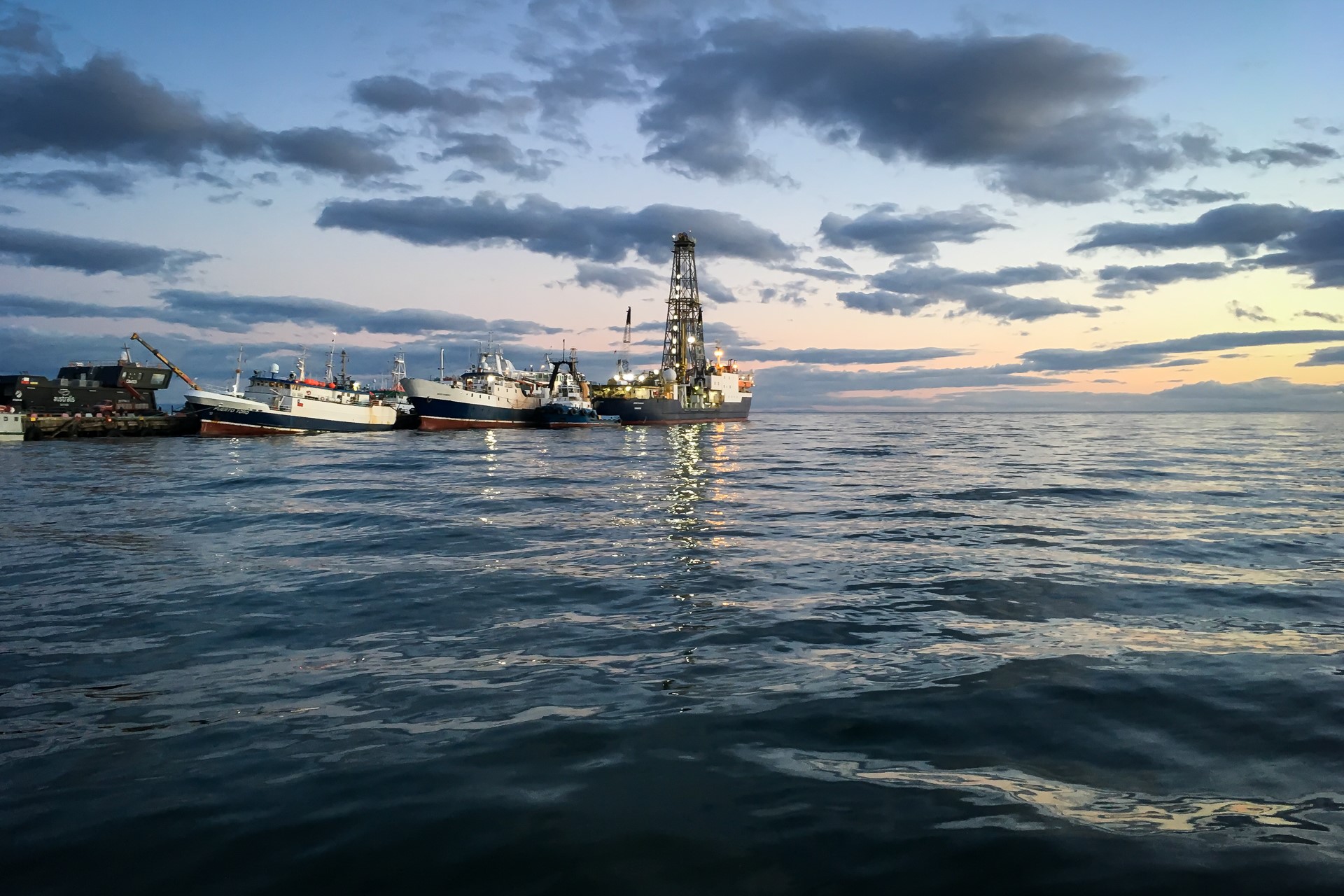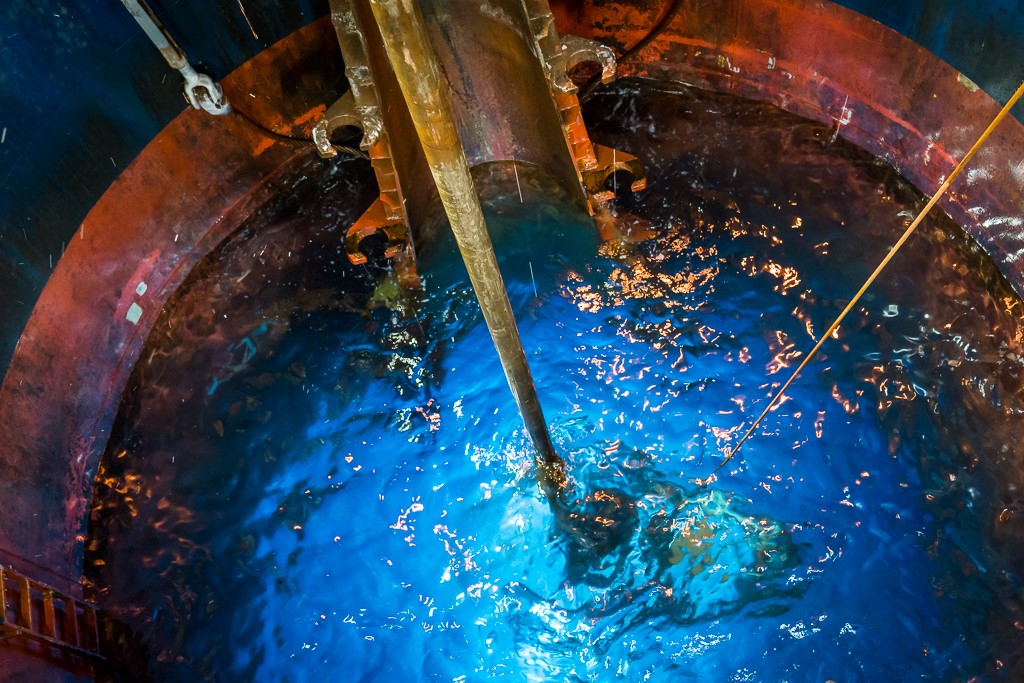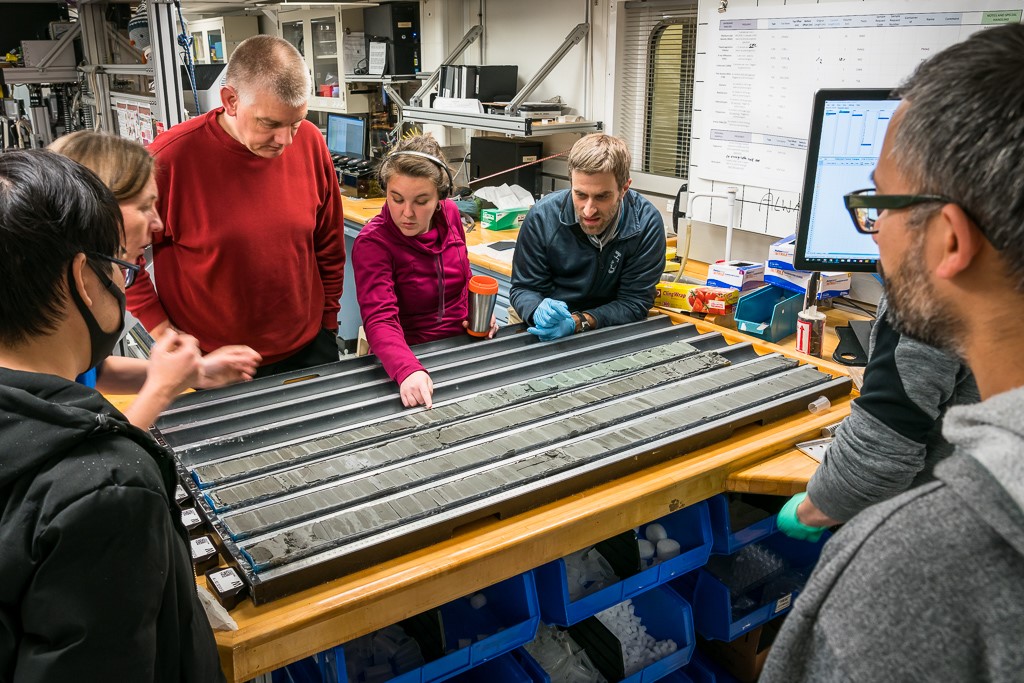Another research expedition but this time quite different
19 February, 2019 Open Oceans
Dr Claus-Dieter Hillenbrand is a marine geologist at British Antarctic Survey (BAS). He is one of two UK scientists participating in International Ocean Discovery (IODP) Expedition 379 to the Amundsen Sea, West Antarctica, aboard the drill ship JOIDES Resolution.
Although IODP Exp 379 is my 16th marine expedition to the Southern Ocean and Antarctica, this cruise aboard the JOIDES Resolution is something special. It is my first expedition on a ship capable of recovering sediment cores from the seabed that are several hundred meters long, sometimes longer than a kilometre. The JOIDES Resolution, which is usually called the “JR”, not only by crew members, technicians and scientists on board but also by “veterans” on land who have sailed with her in the past, was designed and re-purposed for drilling into the seabed. As a consequence, her design has only little in common with that of other research vessels I have been on during the last 25 years, such as RRS James Clark Ross, RV Polarstern or RRS Discovery.

Designed to drill
The outline of the JR is dominated by the “derrick”, a huge drill tower in the centre of the ship that rises more than 63 meters above the ocean surface, which is roughly height of London’s Tower Bridge. Instead of a spacious working deck, which usually is located close to the stern of a research vessel, a so-called “drill floor” is located directly under the derrick of the JR. Here, the drill pipes for coring are assembled into the drill string that is deployed through the “moon pool”, a round opening in the ship’s hull, into the ocean. Storage racks for the ca. 14 km of drill pipes, flanked by two massive cranes, are located behind the derrick, whilst workshops and a helideck situated on top of the engine room constitute the rear part of the JR. The frontal part of the ship comprises the Bridge, another crane, accommodation cabins and lounges for the 64 crew members and 57 scientists and technicians on board, as well as a galley, stores, a laundry, scientific holds, a gym, and research laboratories.

A ‘Floating Laboratory’
The scientific laboratories on board of the JR are another of her unique and distinct characteristics, which I have not encountered on any other research ship before. Because of the excellent, state-of-the-art analytical instrumentation and equipment available, the JR is often referred to as a “floating laboratory” whose impressive capabilities rival those of some of the most renowned marine geological research facilities from around the world. The JR‘s laboratories enable us scientists on board to process and investigate the composition and age of sediment and hard rock cores and discrete samples taken from these cores immediately after their recovery. This is highly important as it allows us to find out at once, for example, whether targeted sub-seafloor strata of a particular age have been recovered already or drilling has to continue, and whether an applied drilling technique is appropriate for the targeted sediments/rocks or needs to be changed in order to retrieve core material of the highest quality.

Settling in and familiarisation
In contrast, the laboratories on most other ships are essentially empty before an expedition, and scientists have to bring their own analytical instruments, equipment, tools and consumables required for their type of investigations with them. Usually, they are busy during the first few days in port with setting up, installing and storing all of these items in the labs before the ship departs. Securing the equipment before crossing the Drake Passage is especially important to prevent it from being damaged when a storm hits the ship while transiting this notorious seaway between South America and Antarctica. Here on the JR, however, we spent the first few days familiarising ourselves with the different instruments in the labs. They allow us to X-ray and photograph the cores, measure their physical properties (such as sediment density, water content and magnetic characteristics), analyse their chemical and mineralogical composition and carry out microscopic studies on individual grains and tiny microfossils found within the sediments. Actually, before starting an expedition a scientist has to show up at the JR’s gangway just with a suitcase packed with personal belongings and clothing – and perhaps some goodies, such as chocolate, which are unavailable on board. Taking into account the daily laundry service as well as the tasty, freshly baked cookies and cakes that are served in JR’s galley around the clock, I almost feel I could have started our 2-month expedition to the Amundsen Sea with hand luggage only. In my next report I will tell you about our work there.